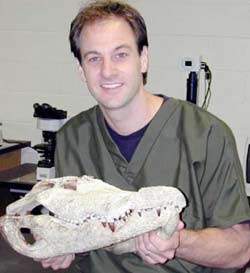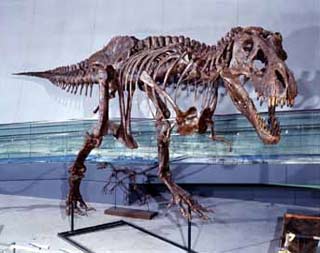Newborn Tyrannosaurus rex dinosaurs had a chance to survive to adulthood, but they needed to make it through their first two years of life.
 |
Dr. Gregory Erickson |
Dr. Gregory Erickson from Florida State University recently confirmed this finding. He and his colleagues have been working to determine the life cycle of the Tyrannosaurus rex dinosaur.
Scientists observed a population of Tyrannosaurus rex dinosaurs consisting of 22 individuals from the species Albertosaurus sarcophagus. Their fossils were found in Alberta, Canada, approximately 200 kilometers northeast of Calgary. According to archaeologists, this dinosaur population died within a short time frame. The discovery of multiple fossils in the same location suggests they lived in herds or at least in small groups.
According to Dr. Erickson, Tyrannosaurus rex may have biological cycles similar to those of birds or long-lived mammals. Once they surpassed the critical two-year mark—during which juvenile dinosaurs were vulnerable to predation—they had a greater chance of surviving to adulthood.
From ages 2 to 13, the average mortality rate of Tyrannosaurus rex was 3.5%, allowing them to grow relatively peacefully. This explains the scarcity of young dinosaur fossils in museums.
However, once they passed their “teenage years,” the situation worsened: the mortality rate for ages 14 to 23 was 22.9%. The challenges of reproduction and predatory lifestyles during middle age increased the risk of death during this period. Tyrannosaurus rex rarely lived to old age. Only one of the discovered dinosaur fossils reached a relatively advanced age of 28, exhibiting signs of aging such as arthritis, calcium loss, and other debilitating conditions commonly found in mammals and other long-lived animals.

Tyrannosaurus rex (Image: dinosaur)
V.N


















































